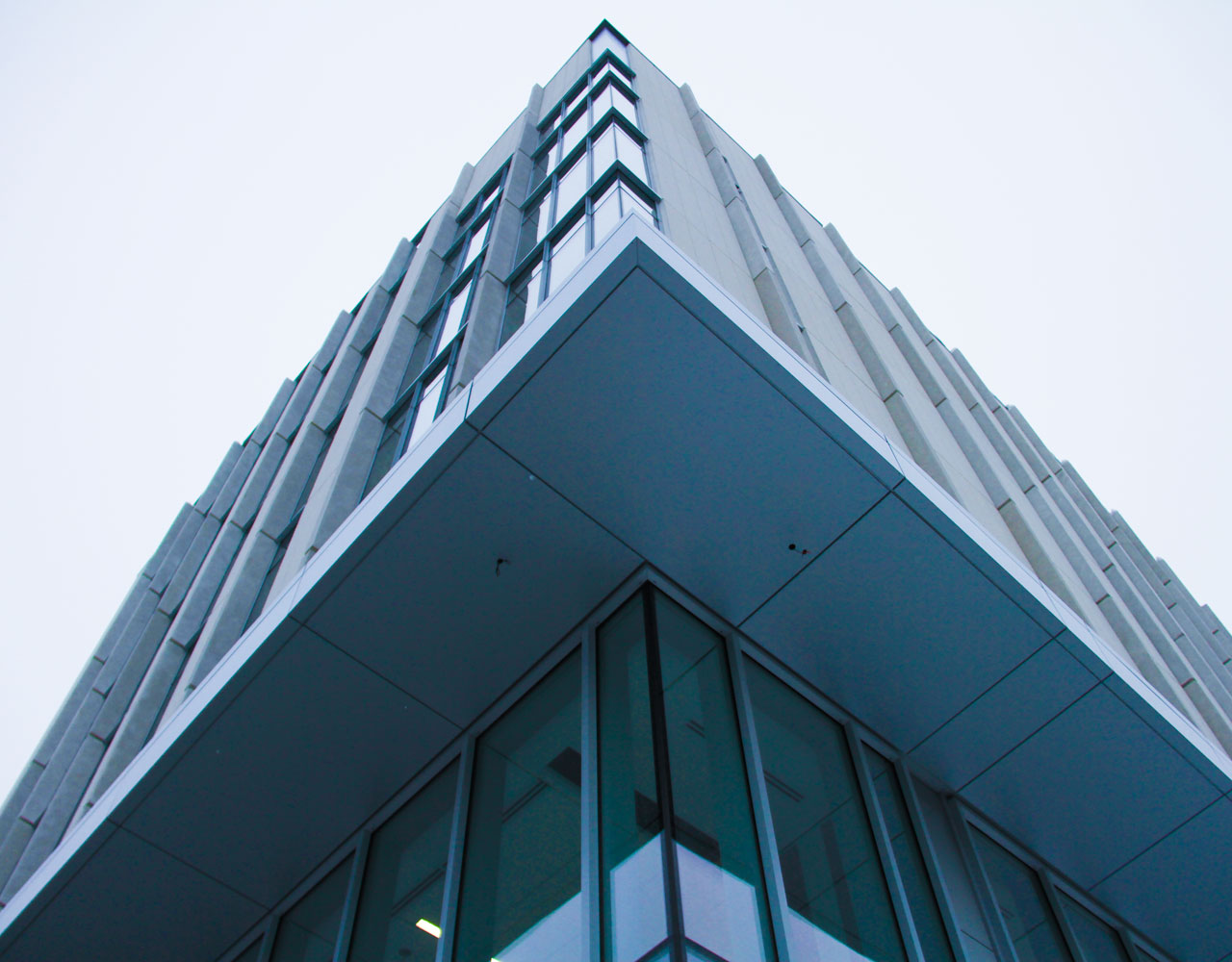Carleton’s new Academic Health Science building has opened its doors to students and faculty.
Originally set to open in the fall of 2017, the building will accommodate Carleton’s recently-established and rapidly-growing health science and neuroscience programs.
The building covers approximately 120,000 square feet and has seven floors, according to the Carleton Finance and Administration webpage. The first floor houses a lecture theatre, while labs, research space, offices and student work stations are located throughout the building. Two floors will act as unfinished and unused shell space for now, to allow for future program growth.
John Stead, chair of Carleton’s neuroscience department, said the new building will allow for the university’s growing neuroscience program to be housed under one roof. According to Stead, neuroscience at Carleton has grown from less than 100 students when it was created in 2010 to more than 500 students today.
“The second floor of the [Academic Health Science building] houses custom-built undergraduate teaching labs for both neuroscience and health science departments,” Stead said. “Previously, we had been unable to offer teaching labs due to the lack of physical space. With the new building, all neuroscience majors will be taking research labs throughout their third year, therefore gaining hands-on experience of some of the most current neuroscience research techniques.”
Stead added that the animal facility on the seventh floor of the building will be opening later in 2018, and will be a “dramatic improvement” to the quality of research space previously available, allowing for greater experimental control.
While the removal of the neuroscience department from its former space in the Life Science Research Building last spring proved controversial, Stead said his department is “working very closely and positively with the university administration to minimize any further disruption.”
Martin Holcik, chair of the health science department, said the department has officially moved into the Academic Health Science building. He said the university received a partial occupancy permit for the building in December.
Established in 2014, Holcik said Carleton’s health science program has been “living in borrowed space” in the Herzberg and Steacie buildings. He said having all health science faculty and labs together will create a sense of community.
“This is the first time we will have our own home. Having a place where we can all meet and work on our common goals and interact with students will certainly provide a much better environment, both in teaching and research,” Holcik said.
Both Stead and Holcik expressed excitement for the future of their departments with new space and technology for students to benefit from.
“Carleton has a record of innovation and excellence in neuroscience,” Stead said, adding that Carleton was the first university in Canada to have a stand-alone neuroscience department with an undergraduate program. “The new teaching labs will be a truly unique feature of our program, that will certainly provide Carleton with a competitive edge.”
“It’s a fabulous building, and it will become a state-of-the-art facility once we are able to actually furnish it with equipment,” Holcik said. “It’s very exciting for all of us.”
Photo by Meagan Casalino






